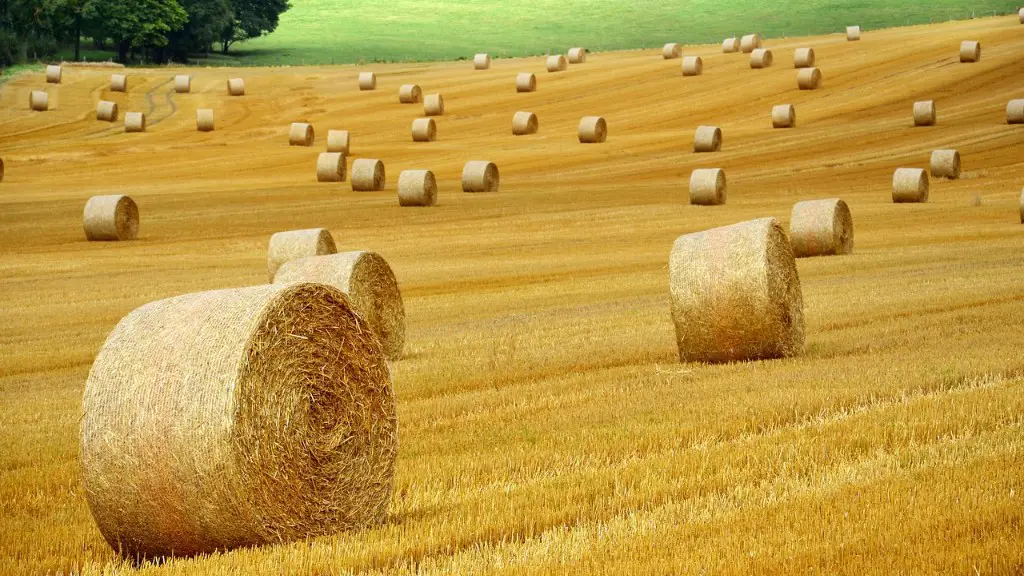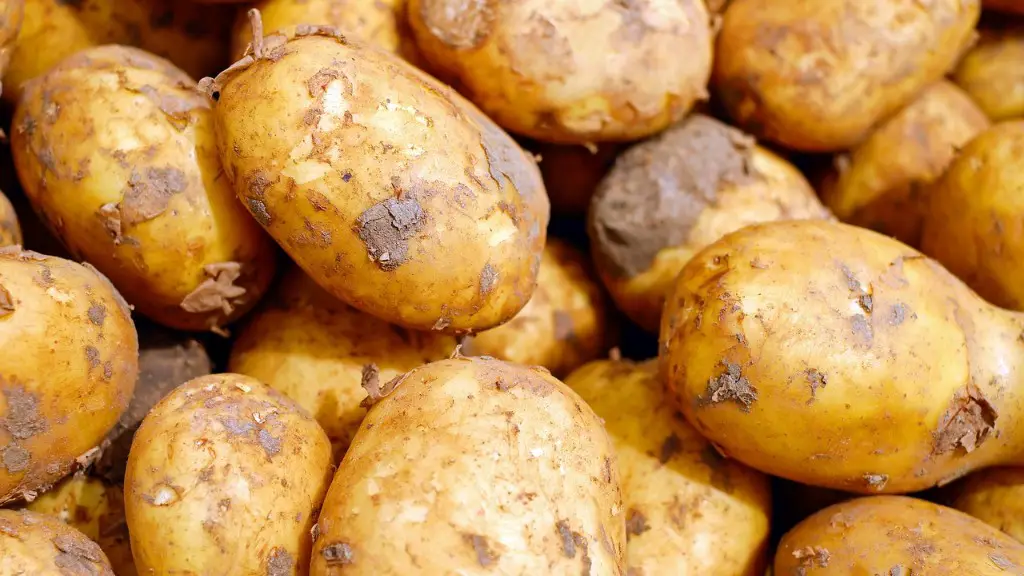In order to teach agriculture, it is important to have a firm understanding of the topic yourself. After all, how can you impart information to others if you do not fully understand it yourself? The best way to teach agriculture is to start with the basics. For example, you can begin by discussing the different types of agriculture and what each one entails. You can then move on to more specific topics, such as discussing the various tools that are used in agriculture and how to properly use them. By covering all of the basics, you will be able to give your students a well-rounded education on the subject of agriculture.
In order to teach agriculture effectively, the teacher should have a strong understanding of the subject matter. They should be able to break down the material in a way that is easy for students to understand. It is also important to make the material relatable to students so they can see how it applies to their own lives.
What do you need to teach agriculture?
If you’re interested in becoming an agriculture teacher, you’ll need to earn a bachelor’s degree in agriculture or agricultural science. The National FFA Organization, also known as the Future Farmers of America, is a great resource for agricultural education and can help you get started in your career.
As an FFA Advisor, you have the opportunity to shape the lives of young people and help them develop important skills that will serve them well in the future. These skills include math, science, leadership, technology, communications, and management. By advising your school’s FFA Chapter, you can help ensure that these students have a strong foundation in agricultural education and are prepared to make a difference in the world.
What are the 3 parts of agriculture education
The three-circle model of agricultural education instruction includes classroom and laboratory instruction, leadership development, and experiential learning. This model is designed to give students a well-rounded education that will prepare them for a career in agriculture. Classroom and laboratory instruction provide the foundation for students to learn about the science and practice of agriculture. Leadership development helps students to develop the skills they need to be successful leaders in the agricultural industry. Experiential learning gives students the opportunity to apply what they have learned in the classroom and laboratory to real-world situations.
Agricultural education prepares students for successful careers and a lifetime of informed choices in the global agriculture, food, fiber, and natural resources systems. Agricultural education teachers are in high demand as California agriculture program enrollment continues to rise. Agricultural education provides students with the knowledge and skills necessary to be successful in the agricultural industry. Agricultural education teachers provide students with the opportunity to learn about the production of food and fiber, the science of agriculture, the economics of the ag industry, and the management of natural resources.
What are 4 needed skills in agriculture?
1. Agricultural workers should have excellent hand-eye coordination to harvest crops and operate farm machinery.
2. Agricultural workers need to have good listening skills to work well with others.
3. Agricultural workers need to be physically strong and have good stamina.
4. Agricultural workers need to have good mechanical skills.
Teaching agriculture can help students learn about the different aspects of agriculture, from farming and ranching to agribusiness and food production. It can also help them develop soft skills such as communication and teamwork, which will be important in their future careers. Additionally, teaching agriculture can help students become more informed consumers, and prepare them for the future by giving them a better understanding of the food system and the issues facing agriculture today.
What are the duties of an ag teacher?
Agriculture science teachers are responsible for educating students about agriculture, food and natural resources. Through these subjects, agriculture science teachers educate students on a wide variety of skills, including science, math, communications, leadership, management and technology. In addition, many advise an FFA chapter.
Agriculture teachers in Alaska earn an average salary of $47,955 per year, making it the highest paying state for this profession. Nebraska also ranked high on our list, with an average salary of $47,955 for agriculture teachers. These states offer great opportunities for those looking to enter the field of agriculture education.
What are basic farming skills
Good problem-solving skills are essential for farmers. They need to be able to troubleshoot issues that come up with their crops and machinery. They also need to be able to communicate effectively with their farmhands.
Organizational skills are also important for farmers. They need to be able to keep track of their inventory and resources. They also need to be able to plan and organize their work schedule.
Farm management skills are also important. Farmers need to be able to understand and manage the financial aspects of their business. They also need to be able to marketing their products and services.
Ploughing is the first step in agricultural practices. It is done to loosen the soil so that the seeds can be sown easily. Adding nutrients to the soil is the second step. This is done to ensure that the plants get all the nutrients they need to grow properly. Irrigation is the third step. This is done to provide water to the plants. Protecting plants is the fourth step. This is done to prevent them from being damaged by pests or diseases. Harvesting is the fifth step. This is done to collect the crops. Storage is the sixth step. This is done to store the crops so that they can be used later.
What are the 7 types of agriculture?
The different types of farming are as follows:
Dairy Farming: This type of farming is focused on the production of milk and other dairy products.
Commercial Farming: This type of farming is geared towards the production of crops and livestock for sale in the market.
Plantation Farming: This type of farming is focused on the production of cash crops such as coffee, cocoa, and sugarcane.
Commercial Grain Farming: This type of farming is focused on the production of grains such as wheat, corn, and rice for sale in the market.
Commercial Mixed Farming: This type of farming combines both crops and livestock production for sale in the market.
Primitive Subsistence Farming: This type of farming is focused on the production of food for the farmer and their family with little to no surplus for sale.
Intensive Subsistence Farming: This type of farming is focused on the production of food for the farmer and their family with some surplus for sale.
Agricultural practices play a critical role in the overall productivity of a farm. The main steps for agricultural practices include preparation of soil, sowing, adding manure and fertilizers, irrigation, harvesting and storage. Each of these steps are important in order to ensure that crops are able to grow and thrive.
What type of teacher is most in demand
Science, technology, engineering, and math (STEM) are subjects that are always in high demand. However, specific needs may vary from institution to institution. For example, institutions in urban areas may have a higher demand for teachers in these subjects than those in rural areas.
It’s interesting to see that the majority of agriculture teachers are male, but that females are still well represented in the field. This may be due to the historical correlation between agriculture and male-dominated work roles. However, it’s encouraging to see that there are plenty of female agriculture teachers out there, disproving the stereotype that agriculture is a man’s field.
What is the retention rate of ag teachers?
The high retention rate of agriculture teachers indicates that the majority of people who enter this profession are satisfied with their career choice. This is good news for the future of agriculture, as it suggests that there will be a stead supply of experienced and qualified teachers to educate the next generation of farmers and agricultural professionals.
The agricultural sector provides the food and raw materials for processed foods, fuels, and textiles. It is a sector that is essential for human survival and wellbeing. Agriculture is also a significant employer of labour, with over 1.3 billion people employed in the sector globally.
The sector is also important for environmental reasons. Agriculture is a major land user, and as such, it can have a significant impact on the natural environment. Agricultural activities can cause soil erosion, water pollution, and loss of biodiversity. However, if properly managed, agriculture can also be a force for good, providing ecosystem services such as pollination, soil formation, and carbon sequestration.
Conclusion
There is no one-size-fits-all answer to this question, as the best way to teach agriculture depends on the specific context and needs of the learners. However, some tips on how to teach agriculture effectively include using hands-on and experiential learning methods, tailoring the content to the learners’ level of understanding, and providing opportunities for applications and practice.
There are a few key ways to go about teaching agriculture. First, it is important to have a good understanding of the subject matter. This can be obtained through research and reading reliable sources. Second, it is essential to be able to communicate effectively with those who are interested in learning about agriculture. This includes being able to answer questions and address concerns in a way that is easy to understand. Lastly, it is important to be patient and be willing to answer any questions that someone may have. With these things in mind, teaching agriculture can be a rewarding experience.





